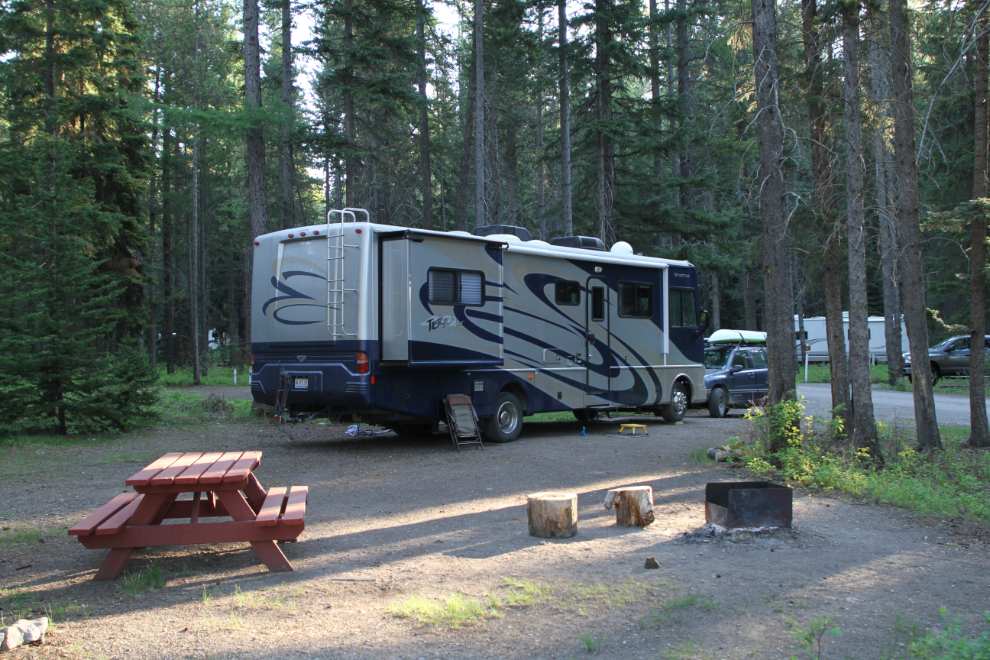A visit to the Canadian Museum of Rail Travel, and on to Sparwood
The main objective for Day 27 of our RV trip – Tuesday, May 22nd – was the Canadian Museum of Rail Travel in Cranbrook, which was closed when we were there 2 years ago. Then we’d move on to Sparwood, the first of the Crownest Pass coal mining towns that I wanted to see much more of.
I usually only show the main mileage that I drive in the motorhome, but the 145-km route shown on the map this time includes the Cranbrook side trip which we drove in the Tracker. Click here to open an interactive version of the map in a new window.
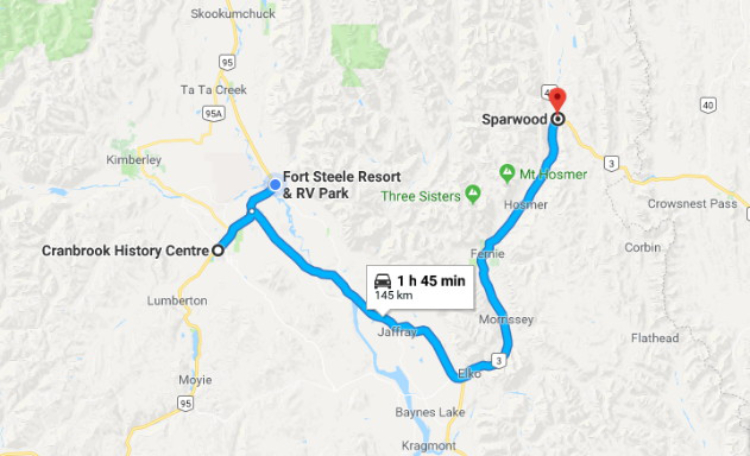
We began the day with a leisurely bacon-and-eggs breakfast that included the wonderful whole grain sourdough bread baked at Fort Steele.
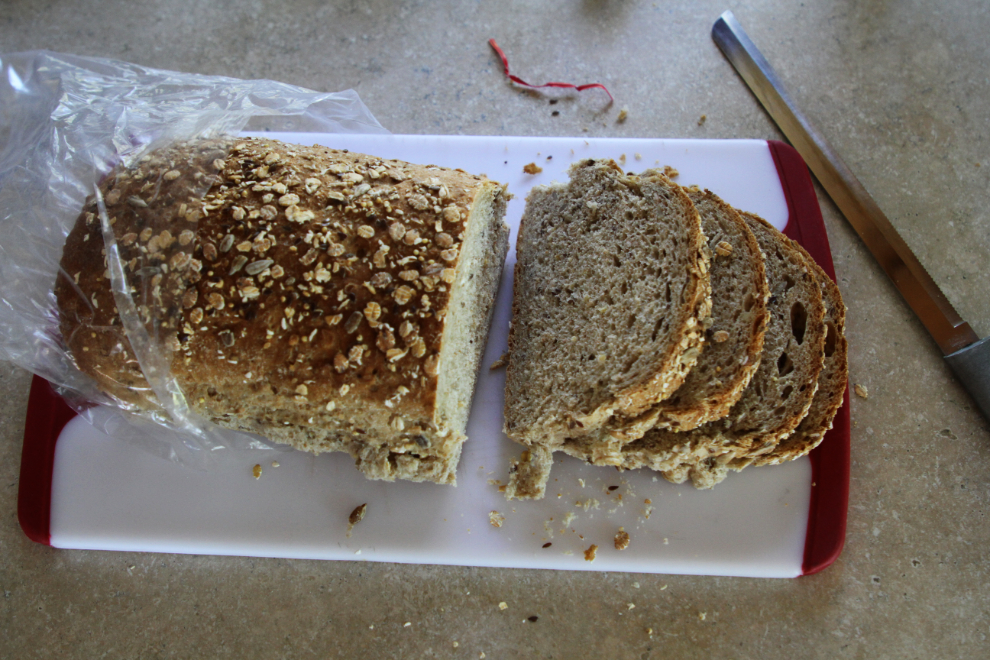
We had again been very pleased with our stay at the Fort Steele Resort & RV Park, and two nights was much better than the one night of our previous visit. It’s simply the best location for a relaxed Fort Steele history experience, especially when you have dogs.

We decided to move the motorhome over to the huge parking lot at the Heritage Town, and take the Tracker into Cranbrook. That turned out to be a very good choice, as parking is very limited at the Cranbrook History Centre, which includes the train museum. We arrived at 12:30.
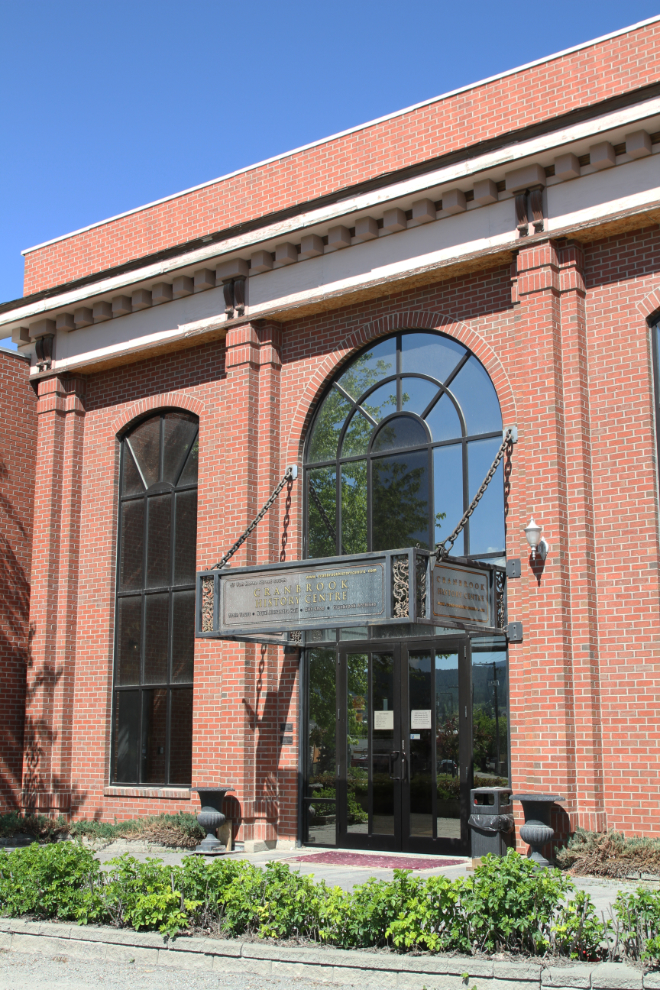
We opted to take a guided tour of the stars of the museum, the 7 cars of Canadian Pacific Railway’s Trans Canada Limited. The cost for the two of us was $35.70 including taxes.
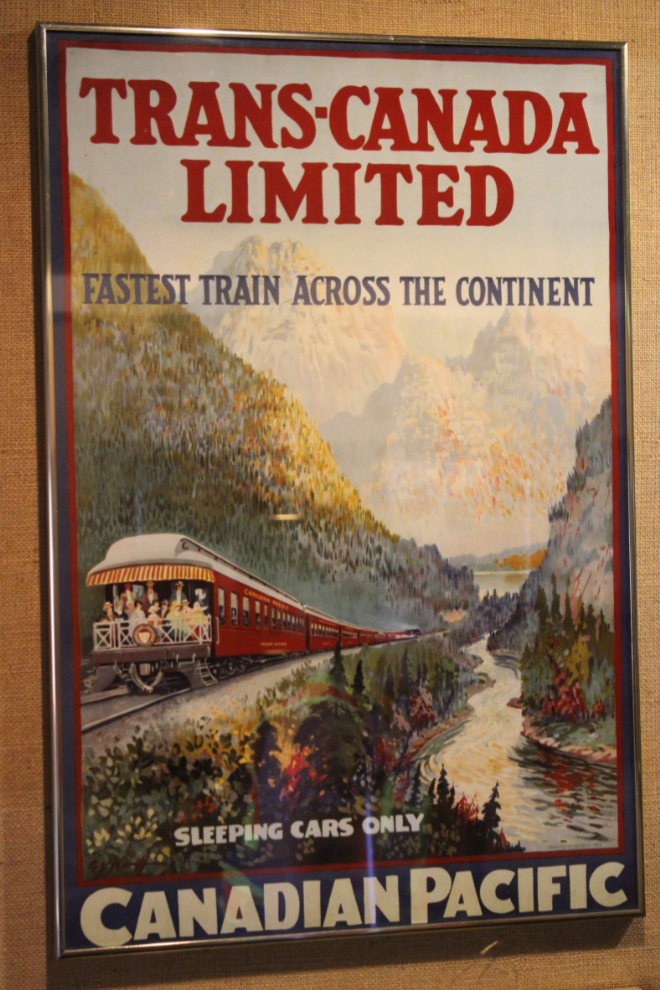
Cathy and I were the only people on the tour, which made dealing with Cathy’s crutches easier. Some major construction is going on – the start of a roof over all of the rail cars. Many of the other cars weren’t accessible because of the construction.
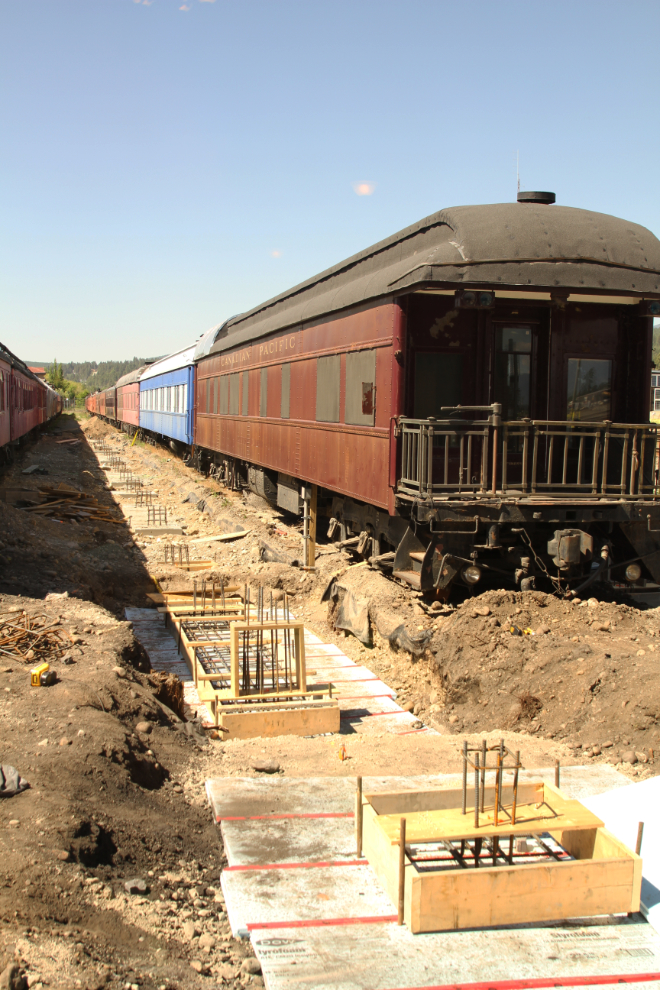
The Trans Canada Limited was a First-Class-only train built in 1929, and this was the Golden Age of rail travel in Canada. The restored cars are gorgeous – the next photo shows the Solarium Lounge car. I was very quickly glad that I’d brought my super-wide 10mm lens so I could get the entire cars and rooms in the photos.
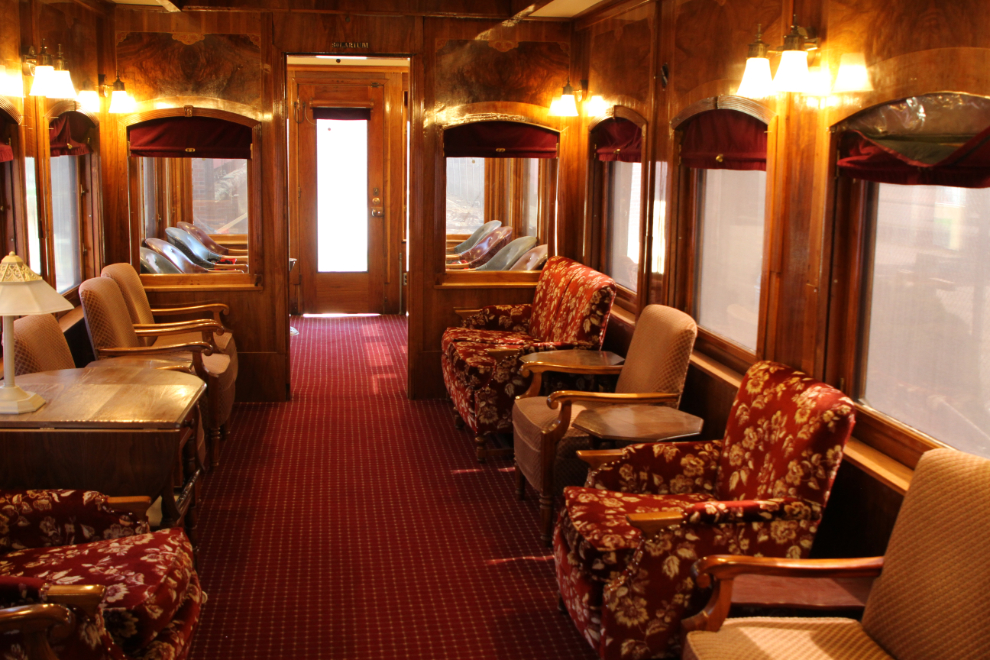
A sleeper compartment, with the upper berth closed, and the window shades closed.
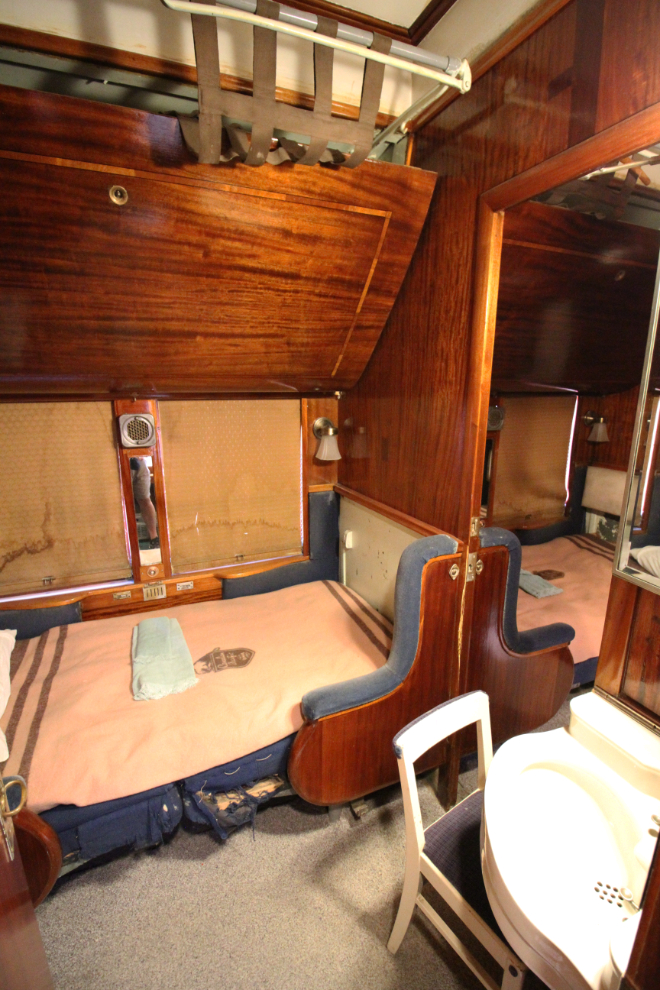
The sinks in the passenger compartments are interesting, with levers for hot and cold water, waste (the drain), and a special lever for special filtered water for “dental” use.
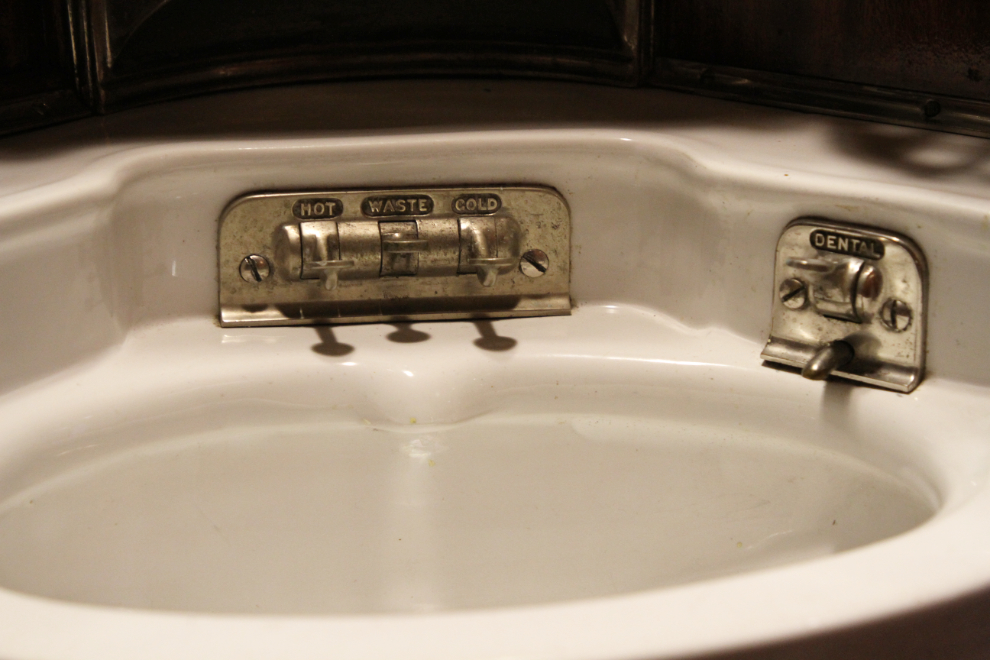
Our guide has been with the museum for many years, moving from volunteer to head guide, and was extremely good. I’ve unfortunately forgotten his name, but I wish that his talk was available in print.
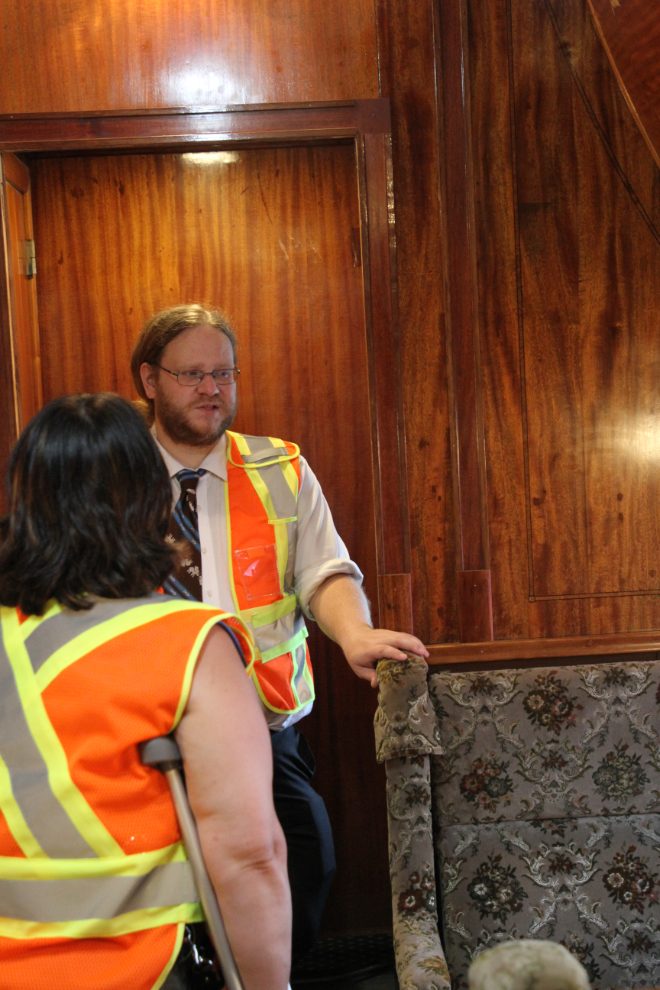
A day car. The quality of the restoration, from the woodwork to the reproduced textiles, is superb, and the cost must be huge.
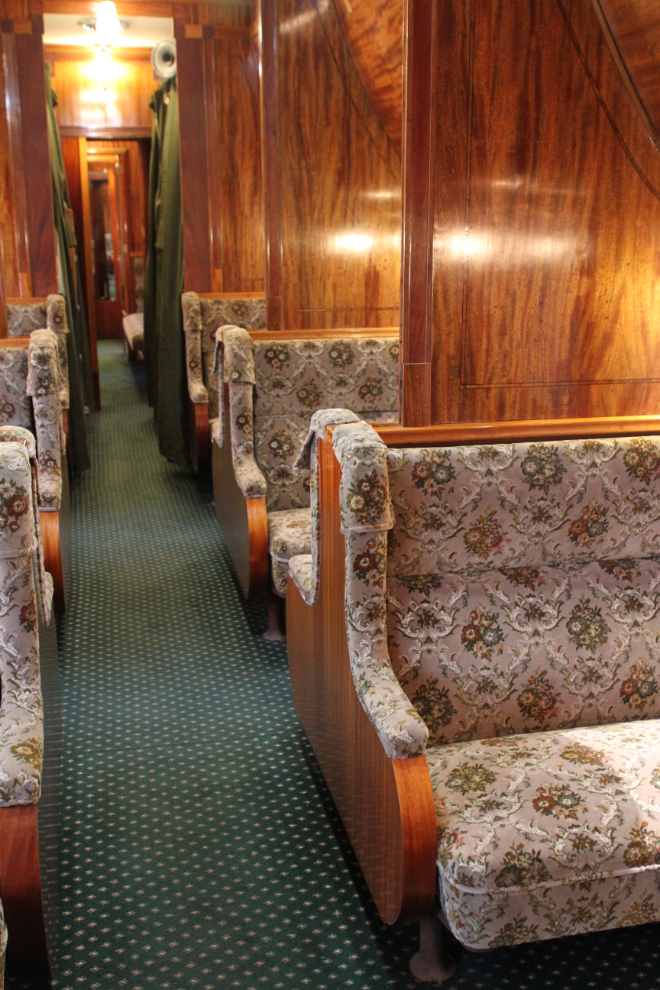
This panel shows the day car’s interior as it looked in 1948 (which is how it was received), with several layers of paint over the original inlaid Honduran mahogany.
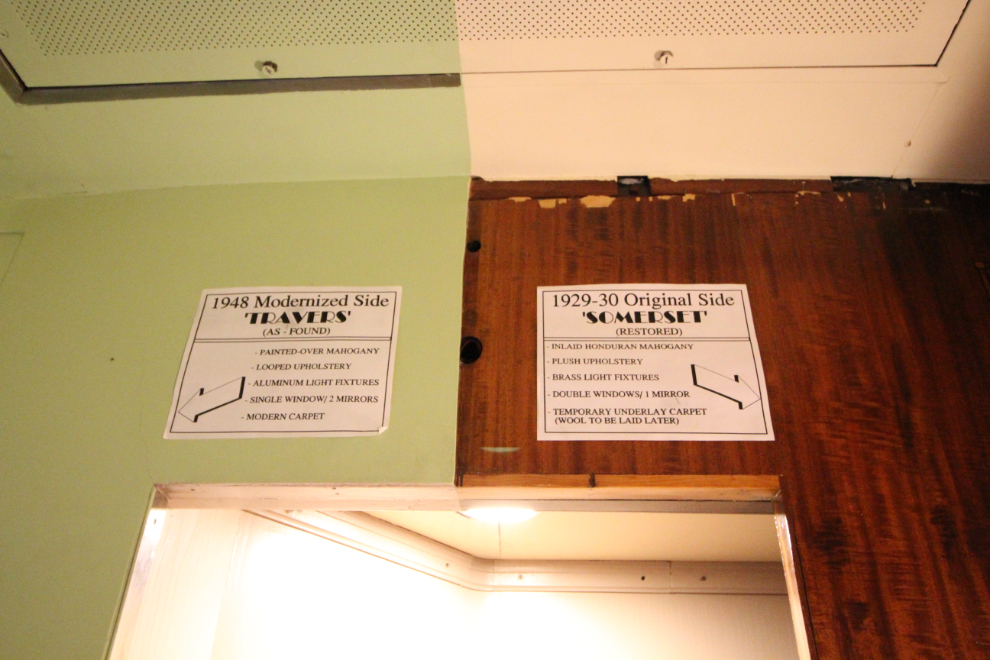
The 1948 decor of the day car on the left, and the original 1929 decor on the right. It seems quite incredible now that the painting and other changes were done, but it was all in the name of cutting costs – the original woodwork and textiles were simply too expensive to maintain properly.
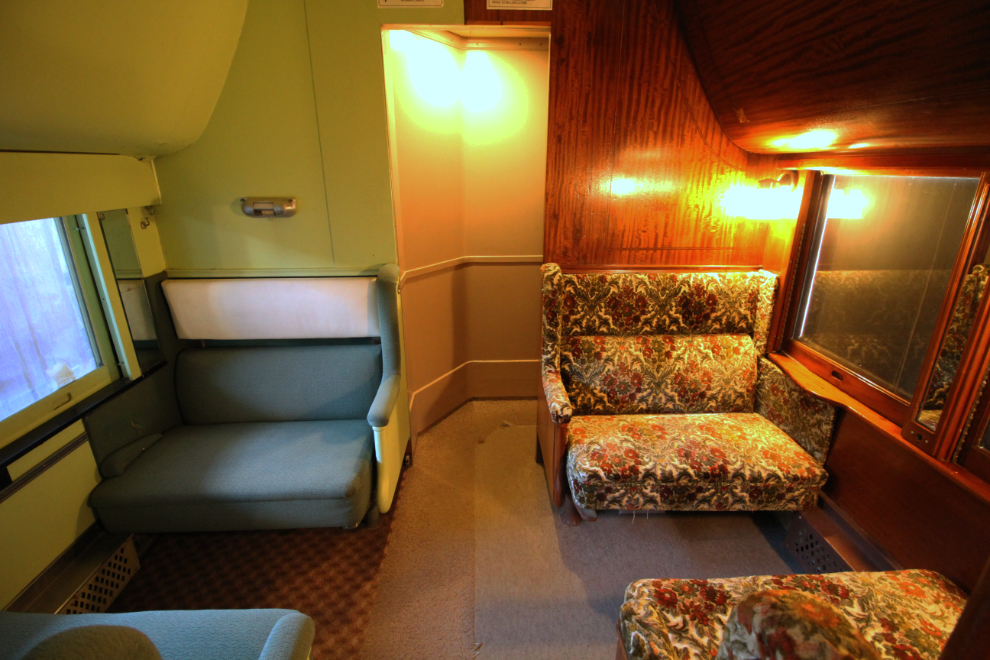
The guide said that the dining car is the favourite car for most people. It’s so beautiful that it’s quite shocking – the photos don’t do it justice. What a wonderful place to enjoy high quality meals for 3 days while Canada passed by outside.
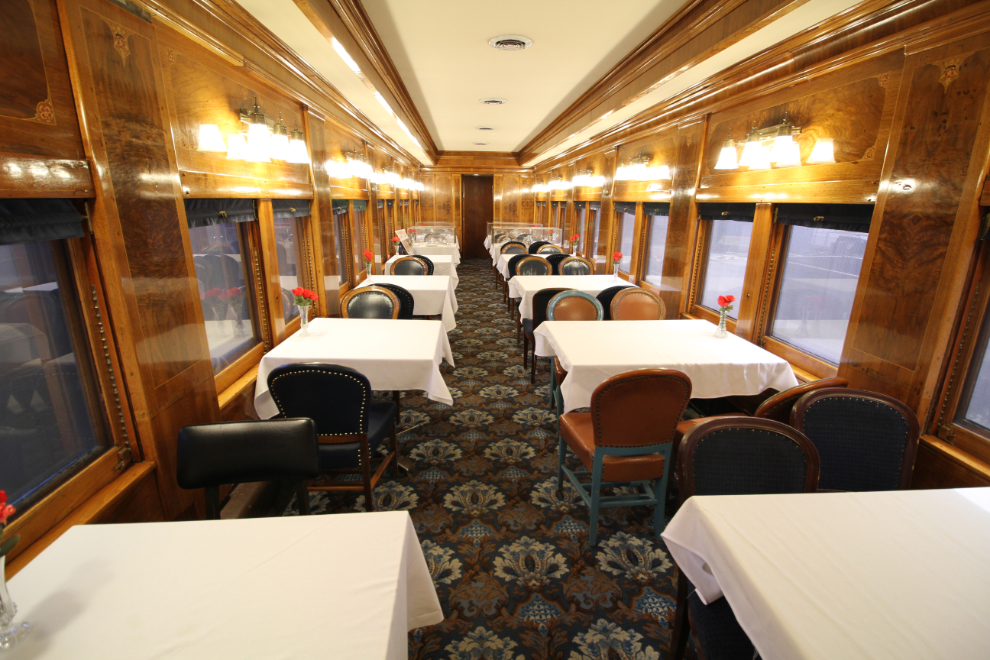
Several original Trans Canada Limited dining car place settings have been found, but the museum is still searching for many more. The china is the Blue Maple Leaf design, produced for Canadian Pacific Railway in England by Ridgeway. Each piece of glassware is etched with the CPR logo, and the silverware was quadruple Elkington plated.
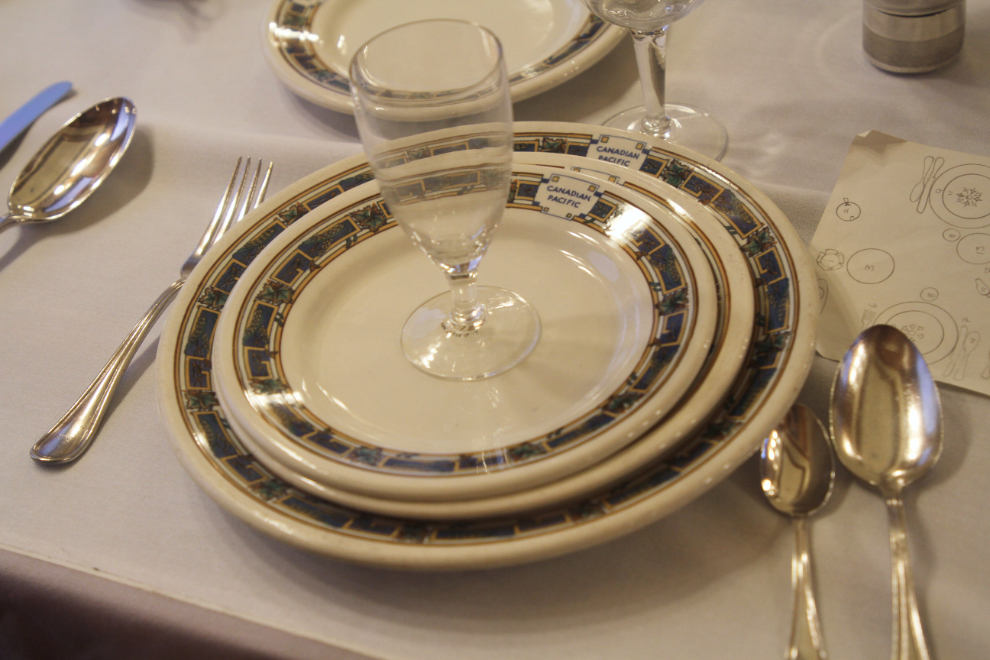
The final car in the consist is this observation car, 90 feet long. It would originally have had 30 arm chairs in it, but only five have been reproduced so far. One chair has been left uncovered so visitors can see the quality of the construction.
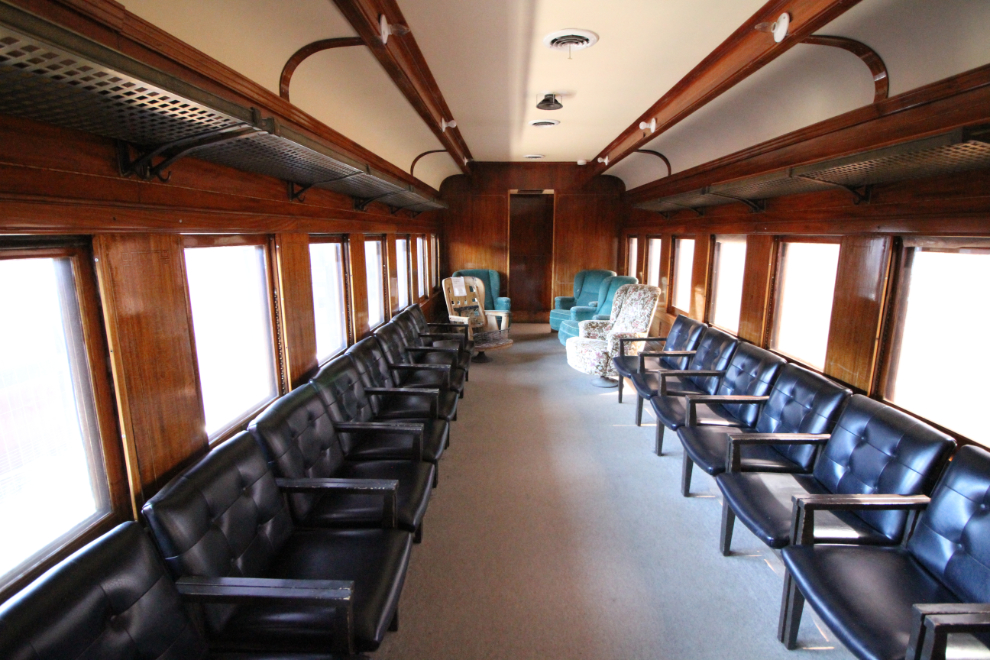
Back in the museum building, one room has displays of the restoration processes of the woodwork in particular. Some of the cars were in such poor condition, it’s hard to believe that they’ve been restored (or are being restored – there’s a great deal of work to do yet).
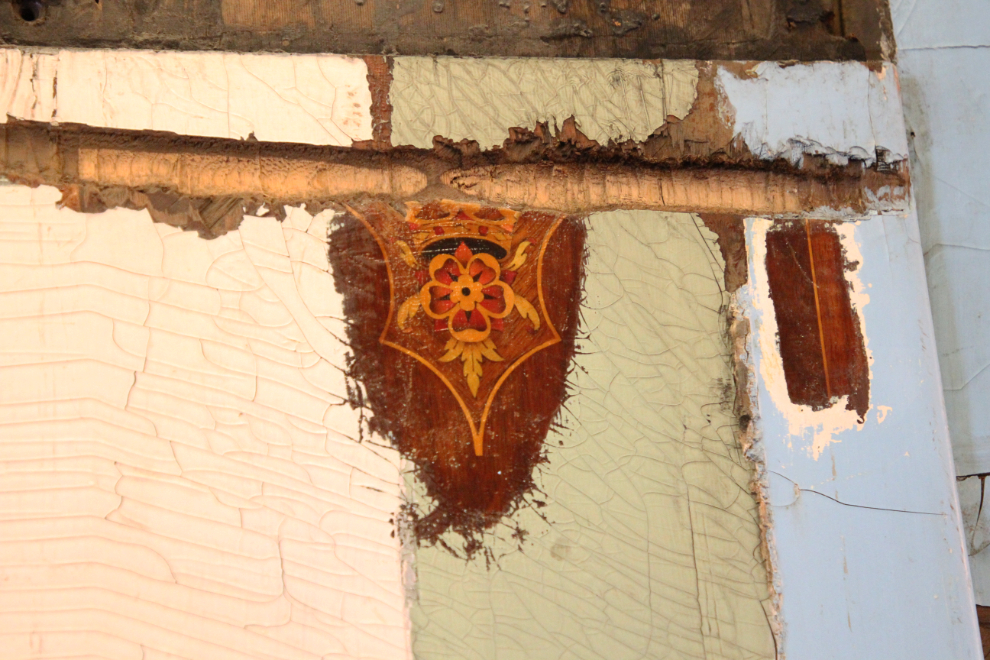
This grand hall can be rented for special events.
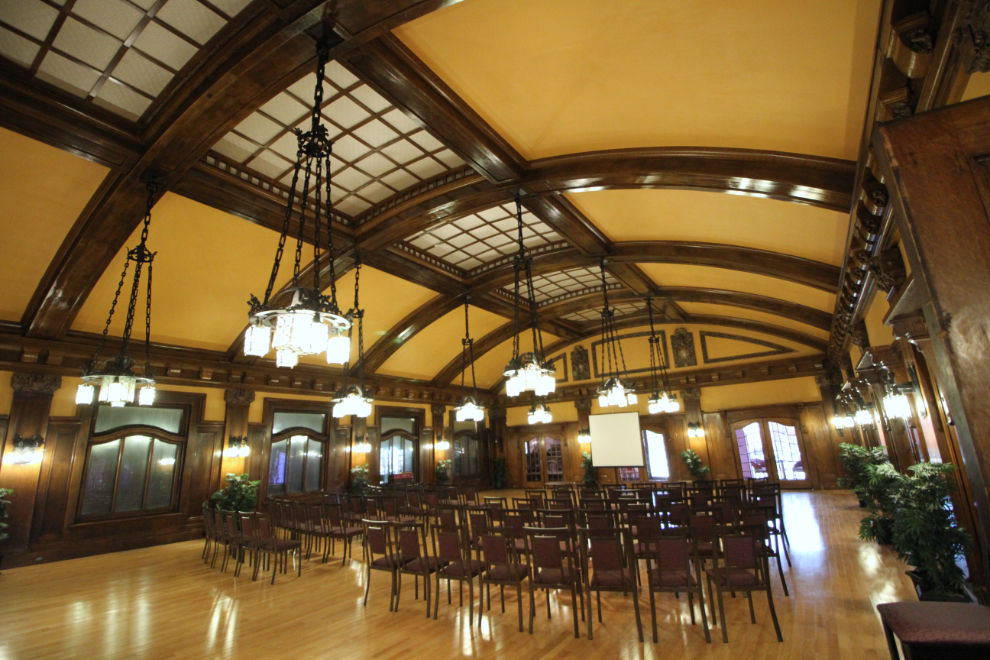
This was going to be a rather short visit, but we wanted to see the model train layouts. On the way to that room, we passed a large Cranbrook history quilt, and stopped for a look. Up at the top in the small section seen in the next photo is a little airplane.
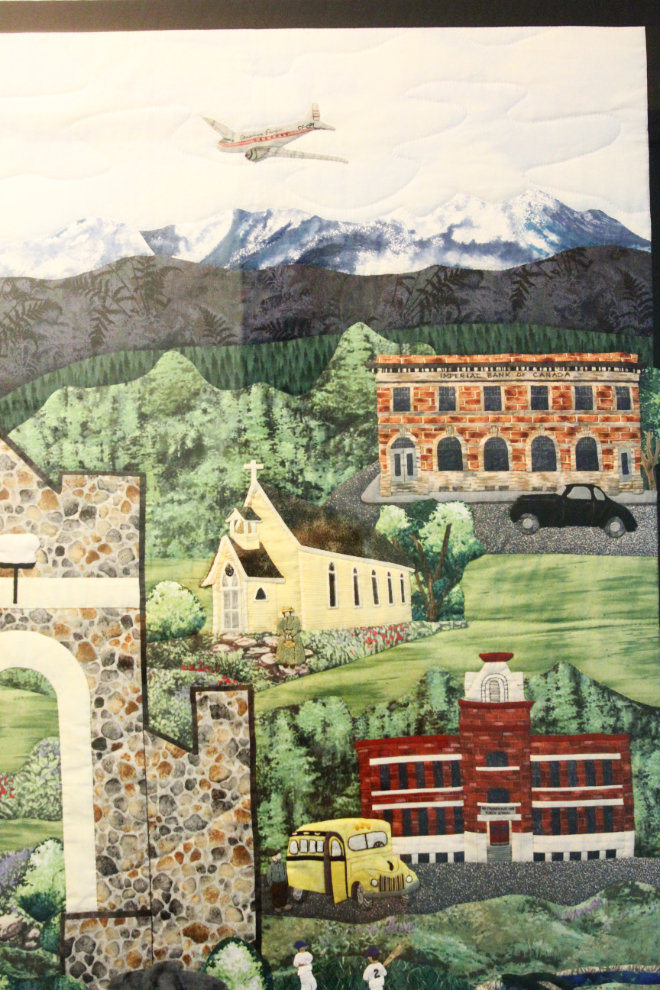
That little plane is the Yukon’s DC-3, CF-CPY, often called The World’s Largest Weather Vane. While I don’t know why CPY is on the quilt, it’s entirely possible that she served Cranbrook at some point – the index to the quilt simply says “Canadian Pacific Airlines, 1947”.
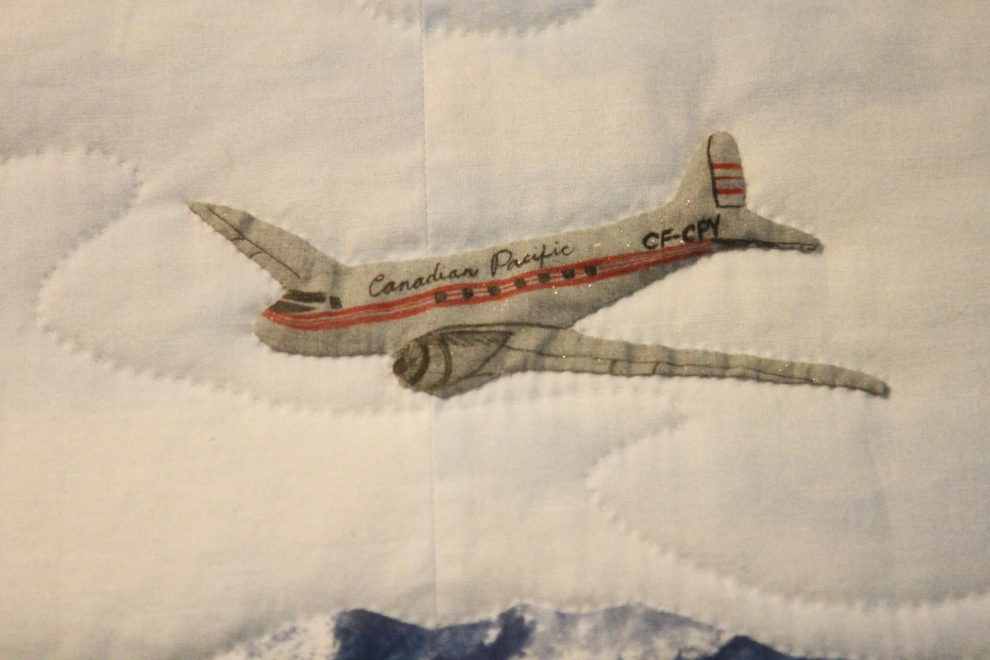
There are two model train layouts – Canadian Pacific’s Southern Mainland section is modelled in HO gauge, and the Fraser and Kettle Valleys are modelled in O gauge. The O-gauge layout, 65 feet long, was donated by the Granville Island Museum in Vancouver when it closed in 2008.
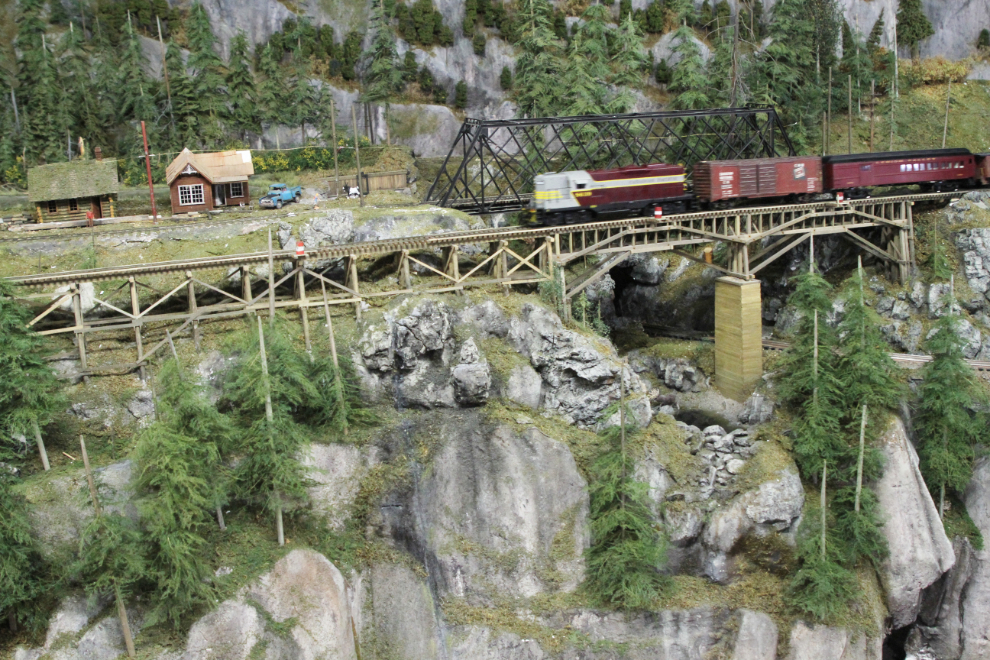
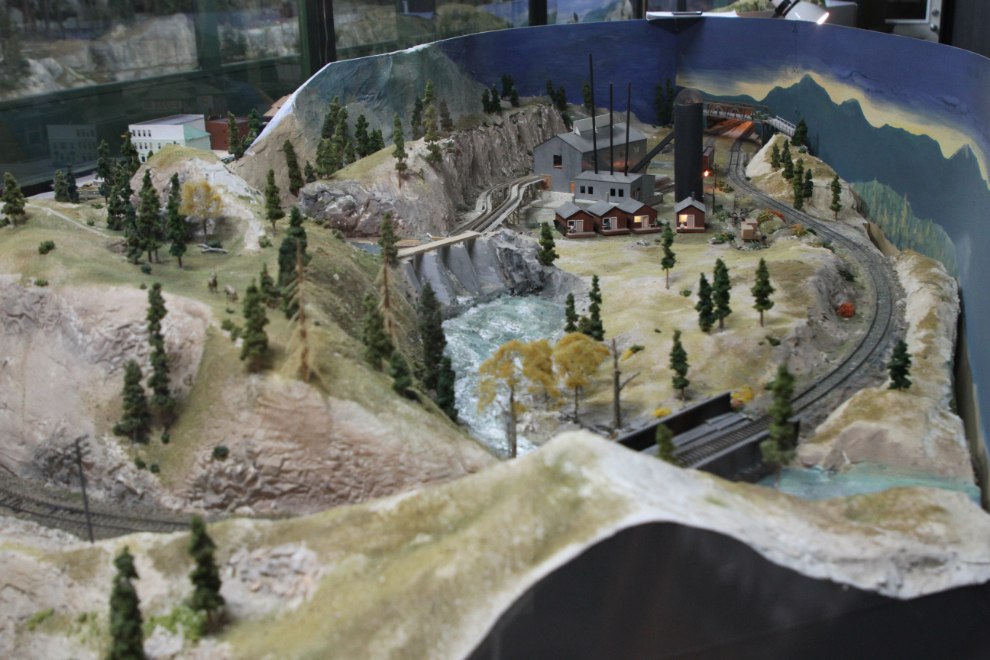
We only spent an hour and a half at the Cranbrook History Centre. It needs much more, but we’ll be back, probably in another 2 years.
Back at Fort Steele, we were in no hurry to leave, especially when the Clydesdales were moved onto the pasture beside the parking lot. At about 3:30, though, I hooked up the Tracker and we headed east, but starting off on the slow, winding Wardner – Fort Steele Road rather than the highway.
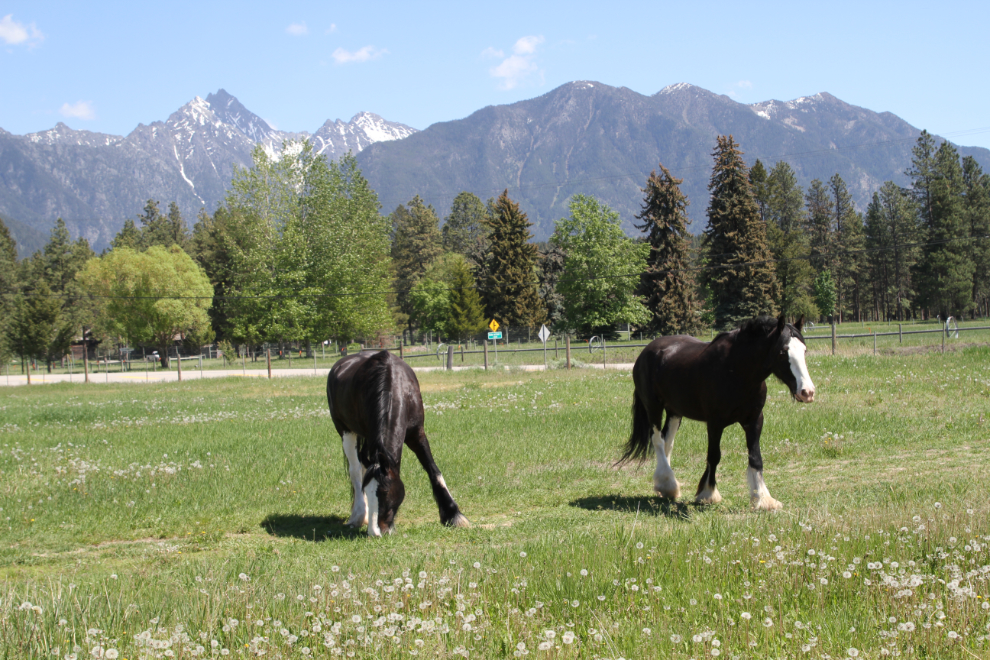
A little over an hour after leaving Fort Steele, we pulled in to the Mountain Shadows Campground in Sparwood. Full services and good wifi in huge forested sites, with great walking trails, and walking distance to downtown, for $37.50 per night.
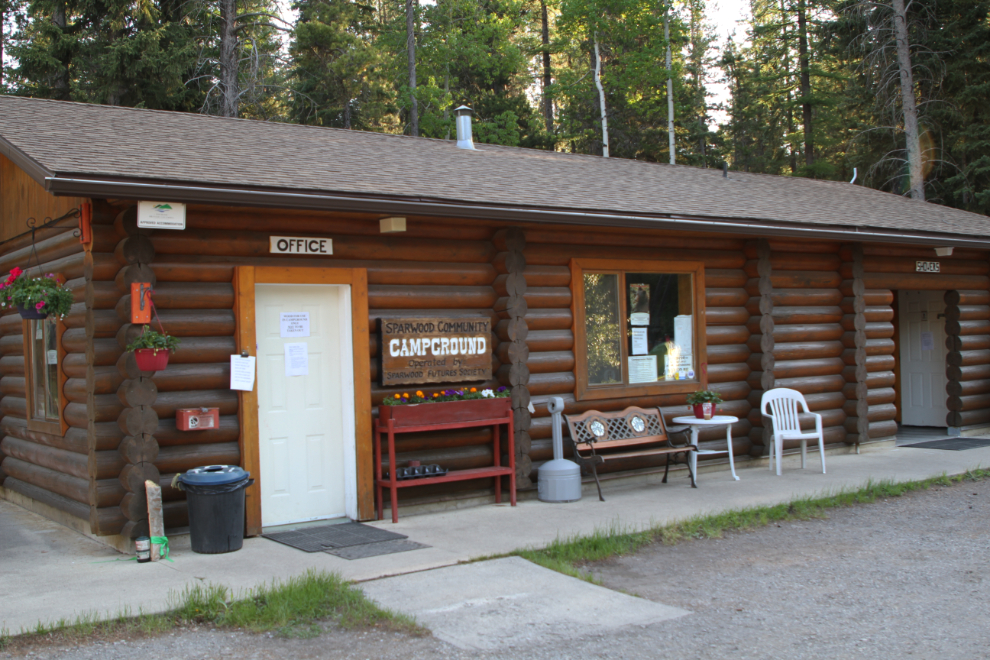
We were soon set up in site #1, and had a wonderful evening, enjoying a bit of Okanagan wine around a campfire. By the end of the evening, I had decided that exploring the Sparwood area required a 2-night stay here.
